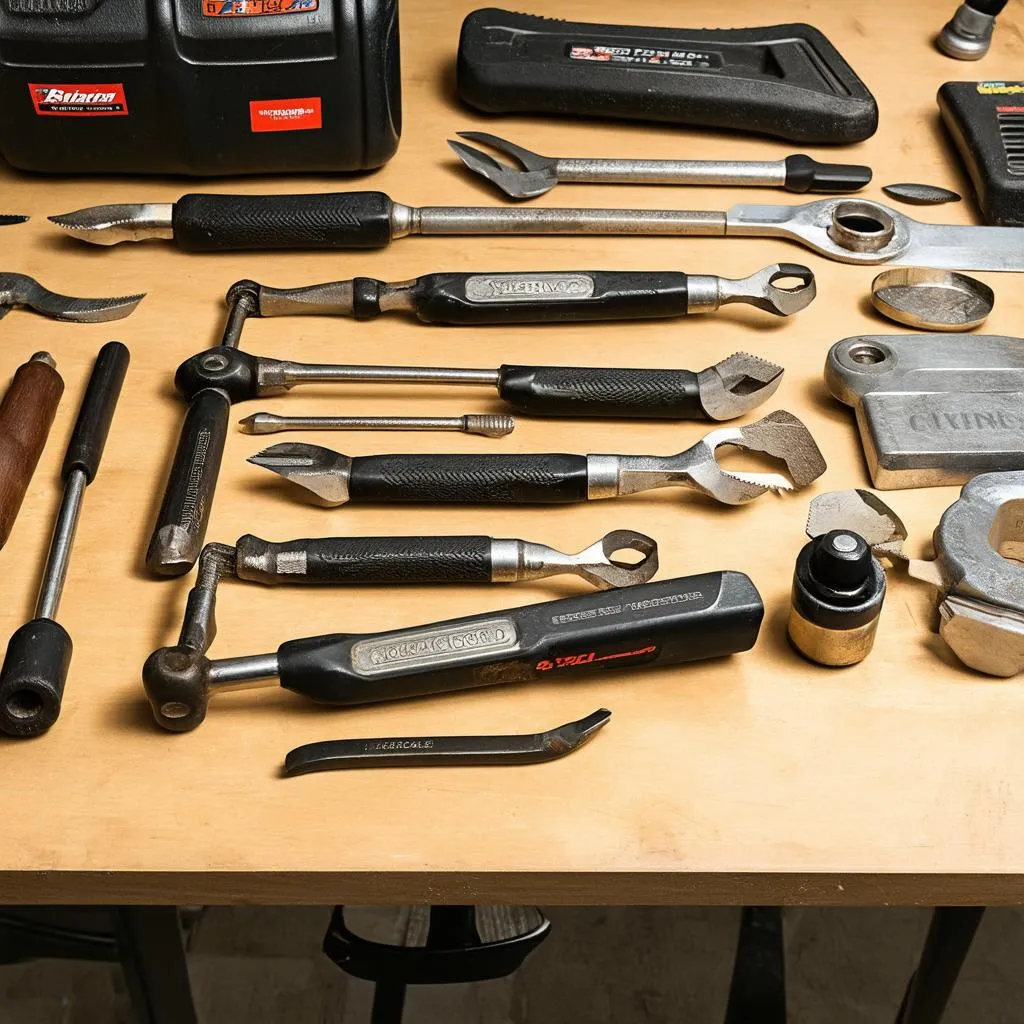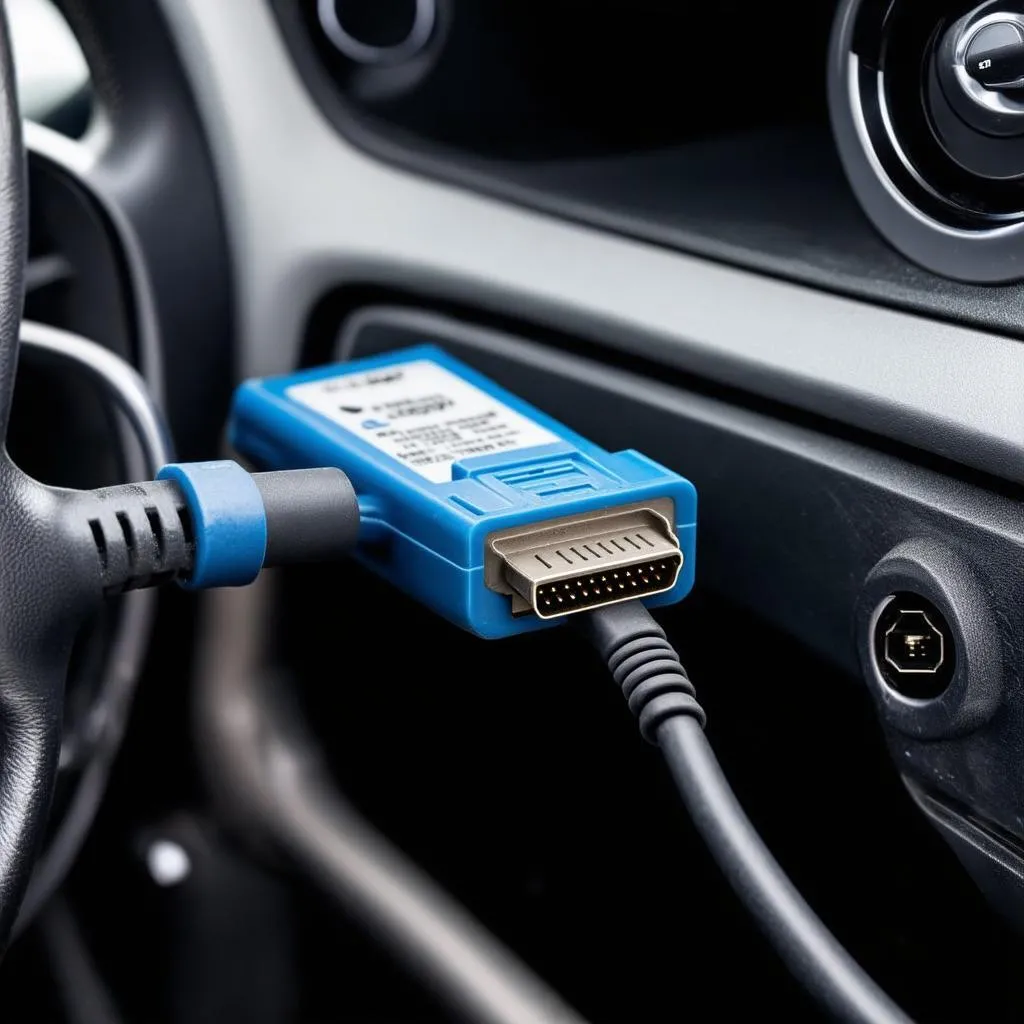The Mercedes-Benz E320 (2001) is a marvel of German engineering, but even the best vehicles require maintenance and occasional repair. Owning the right tools can empower you to diagnose and potentially fix issues yourself, saving you time and money. This comprehensive guide delves into the essential tools for your E320, equipping you with the knowledge to tackle automotive tasks head-on.
Understanding Your E320 and Its Systems
Before diving into tools, it’s crucial to grasp the basics of your E320’s systems:
- Engine: The heart of your vehicle, responsible for generating power.
- Transmission: Transfers power from the engine to the wheels.
- Braking System: Ensures safe deceleration and stopping.
- Electrical System: Powers everything from lights to the sophisticated onboard computer.
- Suspension: Provides a smooth and controlled ride.
Each system requires specific tools for diagnosis and repair.
Essential Tools for Your E320 (2001)
Owning the right tools can make all the difference:
1. OBD-II Scanner:
- Purpose: This is your gateway to the E320’s computer. It reads and clears Diagnostic Trouble Codes (DTCs), providing insights into engine, transmission, airbag, and emissions systems.
- Recommendation: Opt for a scanner that reads manufacturer-specific codes, not just generic ones, for more in-depth diagnostics. Consider models that offer live data streaming for real-time analysis.
- Expert Insight: “Investing in a high-quality OBD-II scanner is crucial. It’s like having an X-ray vision into your car’s health,” says automotive engineer, Dr. Emily Carter, author of “Modern Automotive Diagnostics.”
2. Socket and Wrench Set:
- Purpose: From removing the air intake for filter changes to tackling suspension work, a comprehensive socket set is a must-have.
- Recommendation: Choose a set with both metric and standard sizes to cover all the bases on your E320.
- Pro Tip: Look for sets that include a variety of extensions and adapters for those hard-to-reach areas.
3. Torque Wrench:
- Purpose: Applying the correct torque (tightening force) to bolts, especially on engine and suspension components, is critical to prevent damage.
- Recommendation: A torque wrench with a range suitable for your E320’s specifications is essential.
- Caution: Improper torque can lead to stripped bolts or even component failure.
4. Multimeter:
- Purpose: Diagnose electrical issues by testing voltage, current, and resistance in various circuits.
- Recommendation: A digital multimeter offers accuracy and ease of use.
- Safety First: When working with electrical components, always disconnect the battery’s negative terminal first to avoid shocks.
5. Jack and Jack Stands:
- Purpose: Safely lifting your E320 for brake work, tire rotations, or undercarriage inspections.
- Recommendation: Invest in high-quality jack stands with a weight capacity that exceeds your vehicle’s weight for maximum safety.
- Never Compromise: Never work under a vehicle solely supported by a jack. Always use jack stands for unwavering support.
6. Basic Hand Tools:
- Essentials: A set of screwdrivers (Phillips, flathead, Torx), pliers, a hammer, and a set of wrenches are fundamental for various tasks.
 Mechanic Tools
Mechanic Tools
Diagnostic Software: Taking it a Step Further
For those seeking a deeper understanding of their E320’s inner workings, diagnostic software can be a powerful ally. These software programs connect to your vehicle’s onboard computer (often via an OBD-II interface) to:
- Access Deeper Diagnostics: Retrieve more detailed DTC information and live data streams than basic scanners.
- Run Actuator Tests: Command components like fuel injectors, solenoids, or windows to activate, aiding in pinpointing faulty parts.
- Perform Coding and Programming: This is an advanced feature, but some software allows for customization of certain vehicle settings.
Recommendation: Research reputable diagnostic software options compatible with your E320 (2001) and operating system.
Note: While diagnostic software can be a valuable tool, it’s important to proceed with caution when making changes to your vehicle’s settings.
Frequently Asked Questions (FAQs)
Q: Can I use any OBD-II scanner on my E320?
A: While generic OBD-II scanners can read basic engine codes, investing in one that supports Mercedes-Benz-specific codes will give you a more comprehensive diagnostic picture.
Q: I’m getting an error code related to the Mass Air Flow (MAF) sensor. Can I replace it myself?
A: With the right tools and a bit of mechanical aptitude, replacing the MAF sensor is achievable. There are many online resources and tutorials available. However, always refer to your vehicle’s repair manual or seek professional help if you’re unsure.
Q: My E320’s “Check Engine” light is on. What should I do?
A: The first step is to read the diagnostic trouble codes using an OBD-II scanner. This will give you an idea of what’s triggering the light. Don’t panic; a “Check Engine” light doesn’t always indicate a major issue.
Cardiagtech: Your Partner in Automotive Diagnostics
For top-of-the-line diagnostic tools and resources, explore the offerings from Cardiagtech. They provide a wide range of automotive diagnostic solutions designed to empower both DIY enthusiasts and professional mechanics.
 Car Diagnostic Tool Plugged In
Car Diagnostic Tool Plugged In
Conclusion
Equipping yourself with the right knowledge and tools is key to maintaining your Mercedes-Benz E320 (2001). From essential hand tools to advanced diagnostic software, the options are vast. Remember, safety and informed decision-making are paramount when working on your vehicle. Don’t hesitate to consult with experienced mechanics or resources like Cardiagtech if you encounter challenges along the way.
Connect with CARDIAGTECH for personalized support and expert guidance on the best diagnostic tools for your specific needs.


